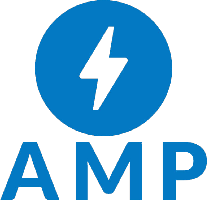🗓️ Live Webinar November 9: How HealthMatch.io Used Customer.io and RudderStack to Launch Their New Business Model in 24 Hours
Product
Deploy customer data infrastructure built for developers
Features
Identify anonymous users and track them across web, mobile and other platforms
Control data across the pipeline, from capture to schema enforcement.
Apply real-time transformations to event payloads to filter, fix bad data, and customize destinations.
Integrations
Save precious data engineering time with hundreds of out of the box integrations.
Search our full directory of source and destination integrations.
Top Integration Categories
Save the engineering headache and send conversion events directly from the RudderStack SDK.
Provide better support by giving reps visibility into every customer behavior and trait.
Automatically populate your warehouse with standardized schemas for events and user records.
Developers
Everything you need to get up and running on RudderStack
Learn how to deploy pipelines, use APIs and manage your instance of RudderStack.
Featured
Set up an end-to-end Event Stream pipeline in less than 5 minutes.
Learn about our Event Spec, standardized schemas and how to interact with our API.
Deploy your first Event Transformation in custom JavaScript using our how-to guide and examples.
Resources
Learn about RudderStack, the data industry, our customers and more
Build a CDP on your warehouse
Build and act on a complete view of the customer in your own warehouse.
Search...
Ctrl KPostgreSQL Integration
PostgreSQL is an enterprise-grade, open source database management system. It supports both SQL and JSON for relational and non-relational queries respectively. Many companies in the market use PostgreSQL as their low-cost data warehousing solution in order to deliver efficient analytics and user insights. A myriad of other analytical tools in the market also integrate seamlessly with PostgreSQL. In fact, Amazon Redshift's design is inspired from PostgreSQL.
Integrating PostgreSQL with RudderStack CDP is very easy, and is a matter of seconds. Once you set the required user permissions and specify the PostgreSQL connection settings on the RudderStack dashboard, you’re good to go!RudderStack automatically tracks and collects event data from your specified sources, and dumps them into PostgreSQL in real-time.
By Adding PostgreSQL Support for RudderStack, you can:
- Track and collect event data across multiple data sources reliably
- Dump your event data into PostgreSQL securely, and in real-time
- Map your events to the PostgreSQL tables automatically, without having to manually define any particular schema
- Set up intermediate storage for storing your staging files
Use the PostgreSQL integration with other popular sources
RudderStack PostgreSQL Documentation
Refer to our step-by-step guide and start using PostgreSQL today
About PostgreSQL
PostgreSQL is a popular open-source database used by thousands of companies worldwide for their data storage requirements. It is enterprise-grade and supports both relational and non-relational queries.
Businesses use PostgreSQL as their low-cost data warehousing solution to deliver efficient analytics and user insights. PostgreSQL is fast, scalable, and easy to administer. It also has excellent support for third-party applications and analytical tools. PostgreSQL is known for its reliability, high performance, and robustness.
This site uses cookies to improve your experience. If you want to learn more about cookies and why we use them, visit our cookie policy. We’ll assume you’re ok with this, but you can opt-out if you wish Cookie Settings.


